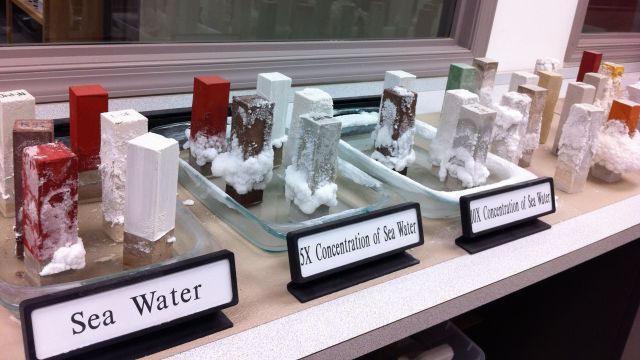Mortars and compatibility
Preventing failures through a unique approach with Cathedral Stone
By Masonry
Often, when considering mortars, overlooked factors can lead to a project’s demise. In striving to create a better solution, Cathedral Stone Products has implemented a unique process and outlook for creating high-performance, long-lasting, colorfast mortar solutions. Implementation of a scientific approach has increased the success rate and taken the guesswork out of a process that will cut costs and future repairs when addressed in the initial planning stage.
Mortars are meant to move and give with the stone they surround. Often times, patches, pointing and everyday applications fail, resulting in cracks, spalling and part or all of the repair failing. While failures can be due to improper application, the main problem is the use of incompatible materials. If the compressive strength of the mortar is higher than the compressive strength of the material it surrounds, it will fail every time.
A new approach
Cathedral Stone Products’ company founder, Dennis Rude, dedicated the last 30 years of his career to investigating mortar failures and finding better ways to prevent them. Throughout this time, he found that failures are studied in labs in the most restoration intensive areas of the world. Based on what he learned, Rude changed his approach to masonry restoration, and Cathedral Stone became the only manufacturer of Jahn Mortars in the United States.Engineered mortars
Jahn mortars are laboratory tested, environmentally friendly and engineered for compatibility. While standard mixes exist, many are engineered to be project specific. The most notable difference between Jahn mortars and others is that the custom mix eliminates bonding agents. Polymers and epoxies are avoided, due to lack of compatibility with substrates and hindering of breathability.While departing from the practice of using expoxies is unique, it is done to ensure performance with the original masonry. Cathedral Stone mortars are designed to allow the natural processes in stone occur. The cardinal rule to the composition of any mortar is that it must be adequately strong and sufficiently porous to prevent moisture from becoming trapped. The key components to engineering a mortar should include breathability (the ability for salts and water to travel through the porous surface of the stone), tensile strength, bendability, e-modulus and compressive strength.
Most often, when testing, organizations test the composition of the mortar. This approach can be flawed due to the changes over time and the fact that the mortar being tested already has failed. A more accurate practice is to test the substrate to which the mortar will be applied. This will ensure compatibility based on the aforementioned key components.
Colorfastness
Unnecessary damage can be avoided by using colored mortars. A pigmented mortar allows for the natural processes in stone to occur, whereas coatings can cause moisture to become trapped because of low permeability and degrade the substrate.Jahn mortars only use synthetic inorganic pigments to color mortar. Inorganic pigments, such as iron oxides, are lightfast, weather stable and insoluble in water so the pigments don’t fade. While organic pigments are effective for automotive and industrial paints, they can fade in as quickly as a few months with concrete products.
Conclusion
Compatibility is the key to successful repairs. Proper compressive strength is necessary for mortars to emulate the behavior of the substrate, thereby sustaining repairs. Avoiding additives and coatings that can inhibit permeability can reduce damage from to salt expansion and freeze-thaw cycles by allowing for salts and water vapor to reach the surface.Originally published in Masonry magazine.
About the Author
Masonry, the official publication of the Mason Contractors Association of America, covers every aspect of the mason contractor profession - equipment and techniques, building codes and standards, business planning, promoting your business, legal issues and more. Read or subscribe to Masonry magazine at www.masonrymagazine.com.
For more information, visit www.cathedralstone.com.



















